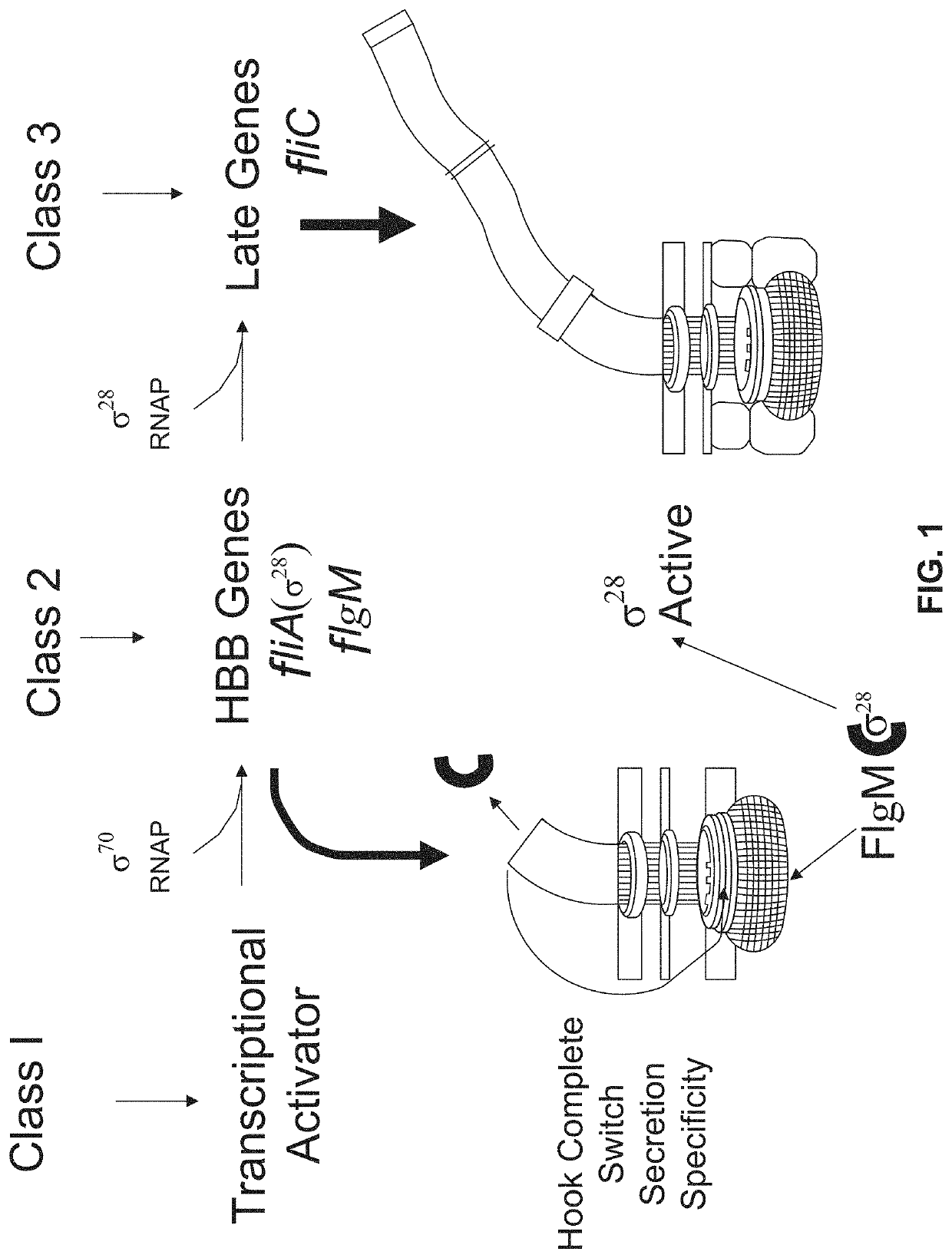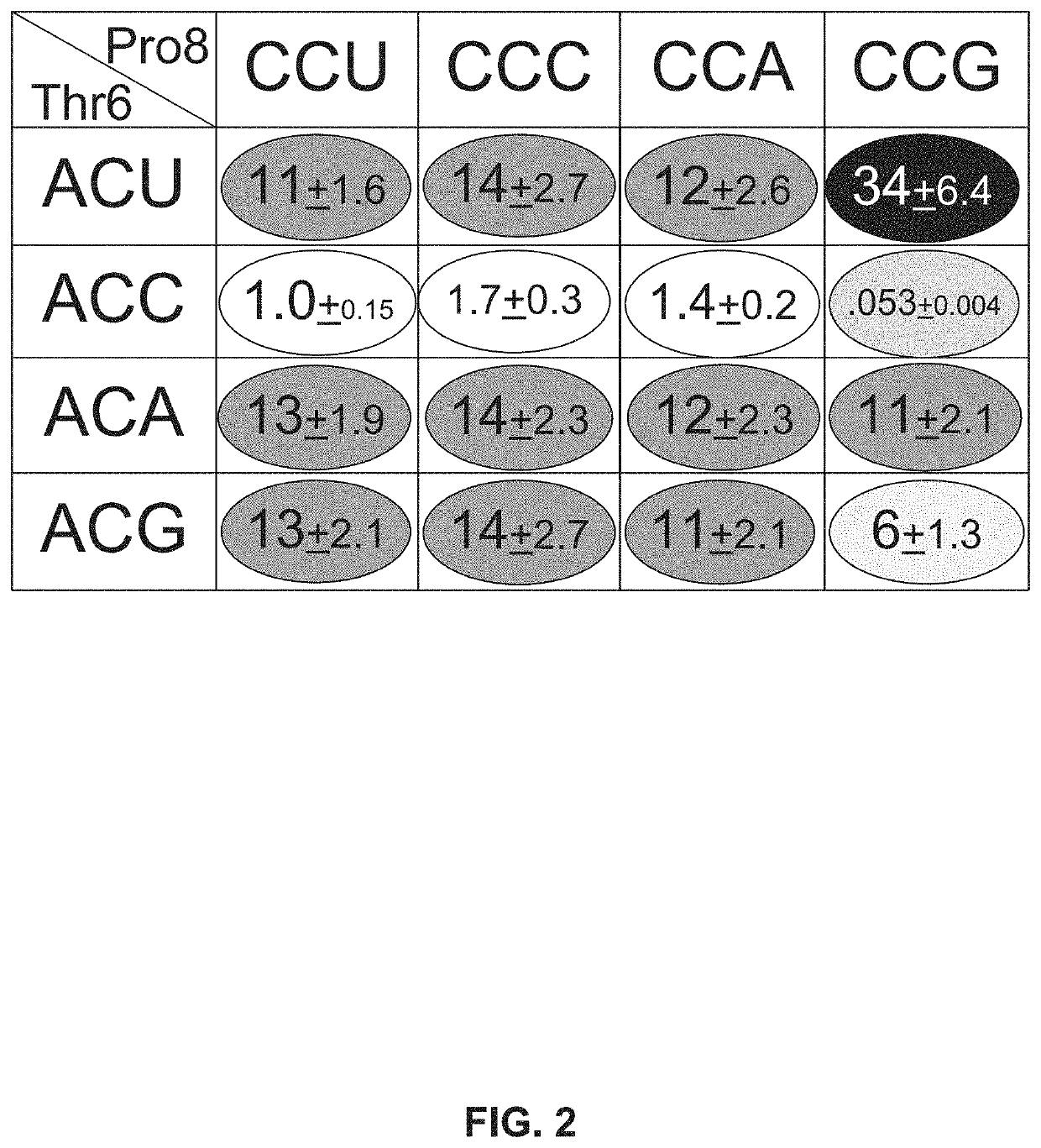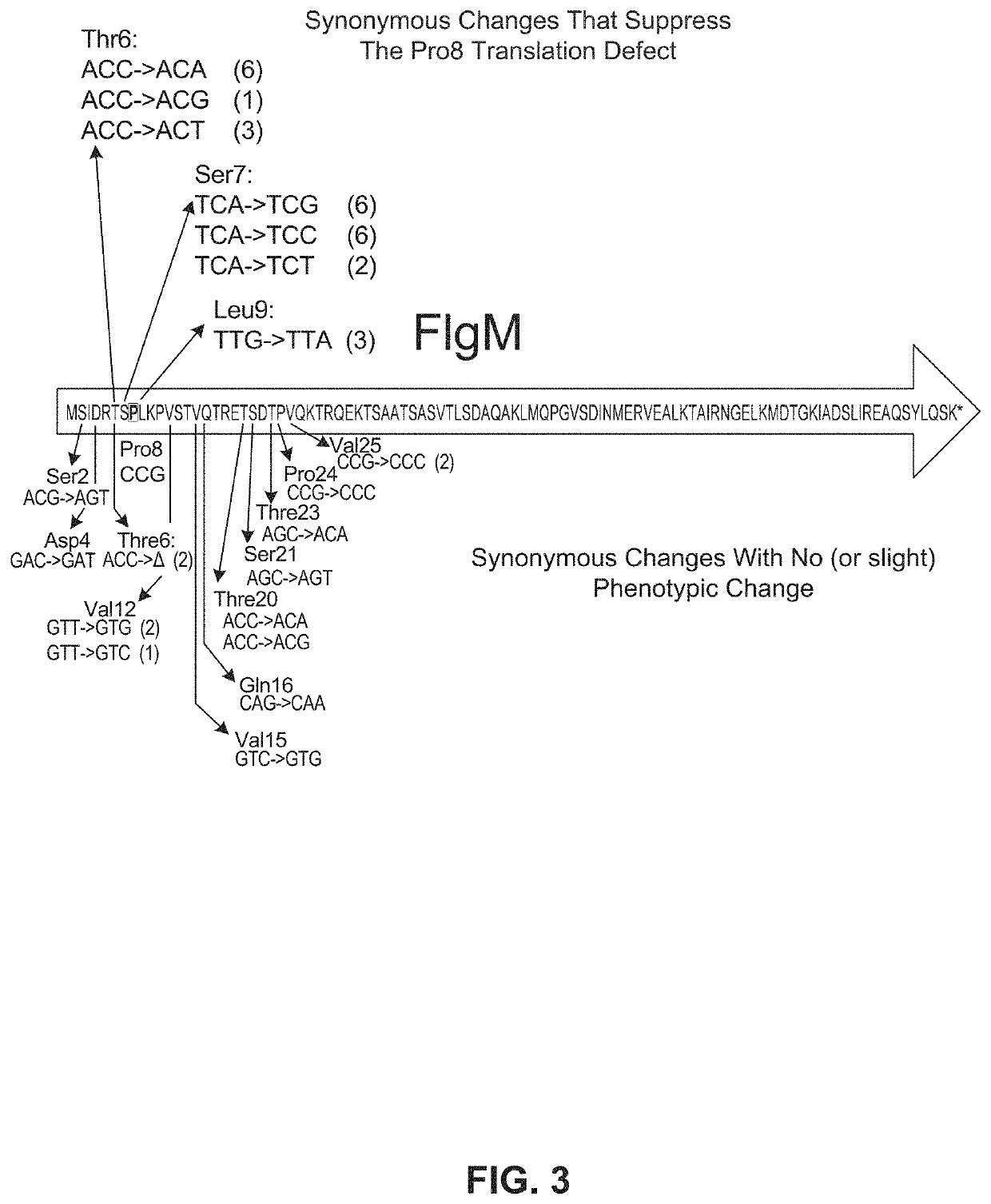Compositions for adjustable ribosome translation speed and methods of use
a technology of ribosome and translation speed, which is applied in the direction of peptides, polypeptides with his-tags, hormone peptides, etc., can solve the problems of complicated decoding process, and achieve the effects of increasing and decreasing the translation speed of polynucleotide sequences
- Summary
- Abstract
- Description
- Claims
- Application Information
AI Technical Summary
Benefits of technology
Problems solved by technology
Method used
Image
Examples
example 1
f Synonymous Codon Mutants on Translation
[0113]An allele of the SerT tRNA that is defective in translating the UCA for amino acid Ser7 of the flagellar anti-σ28 gene, flgM was isolated (Chevance, F. F., et al., J Bacteriol 188:297-304 (2006)). Despite there being many genes with UCA codons for serine in the Salmonella flagellar system, the serT tRNA mutant allele only effected flgM translation. Without being bound by theory, it is believed that the effect of the serT mutant allele on translation of the UCA (Ser7) codon of flgM is a codon-context effect.
[0114]Transcription from a σ28-dependent promoter is inhibited by FlgM. Using the bacterial luciferase operon (lux) as a reporter, the anti-σ28 activity of FlgM was measured. When FlgM activity is high, σ28-dependent transcription of PmotA-lux is low. Synonymous mutations were introduced adjacent to position Ser7 and the effects of flanking synonymous mutations on flgM mRNA translation was determined.
[0115]All 16 combinations of synon...
example 2
n of Polynucleotide Translation Using Synonymous Mutagenesis of FlgM
[0117]Starting with a flgM sequence comprising the CCU to CCG change at Pro8, the region of the flgM gene that encodes amino acids 2 through 25 was modified using doped oligonucleotide mutagenesis designed so that, on average, each oligonucleotide had a synonymous codon change for amino acids 2 through 25. Results were as shown in FIG. 3.
[0118]Only synonymous changes in the two codons preceding Pro8 and the Leu9 codon following Pro8 CCG resulted in restoration to wild-type FlgM inhibitory activity. These results demonstrate that efficiency of translation of a specific codon is dependent on the flanking two codons.
[0119]Synonymous variations coding for amino acids Thr6-Ser7-Pro8-Leu9 of FlgM result in an about ˜2-fold range in FlgM protein levels. However, since FlgM is a regulatory protein that inhibits σ28-dependent fliC transcription, the about 2-fold range in FlgM protein levels produces more than an about 1000-f...
example 3
n of Heterologous Polynucleotide Translation Using Synonymous Mutagenesis of FlgM
[0120]The first ten codons of lacZ were replaced with the first ten codons of flgM, and the flgM sequence was mutated to comprise a CCU to CCG synonymous codon change at Pro8 (codon number 8, in the 5′ to 3′ direction, of flgM that encodes proline). Consistent with the results above, expression of the heterologous lacZ sequence under the control of the context-codon-optimized flgM sequence resulted in reduced β-galactosidase activity. β-galactosidase activity was reduced about 210 to 150 units.
[0121]These results demonstrate that synonymous changes in one or more of Thr6-Ser7-Pro8-Leu9 of FlgM effect heterologous protein production (here LacZ) levels when a polynucleotide sequence encoding that polypeptide (here lacz) is operably linked to the context-codon-optimized FlgM sequence (SCM FlgM) and expressed and secreted through a bacterial secretion system (here an engineered T3SS).
[0122]Exemplary polypep...
PUM
| Property | Measurement | Unit |
|---|---|---|
| Tm | aaaaa | aaaaa |
| pH | aaaaa | aaaaa |
| translation speed | aaaaa | aaaaa |
Abstract
Description
Claims
Application Information
 Login to View More
Login to View More - R&D
- Intellectual Property
- Life Sciences
- Materials
- Tech Scout
- Unparalleled Data Quality
- Higher Quality Content
- 60% Fewer Hallucinations
Browse by: Latest US Patents, China's latest patents, Technical Efficacy Thesaurus, Application Domain, Technology Topic, Popular Technical Reports.
© 2025 PatSnap. All rights reserved.Legal|Privacy policy|Modern Slavery Act Transparency Statement|Sitemap|About US| Contact US: help@patsnap.com



